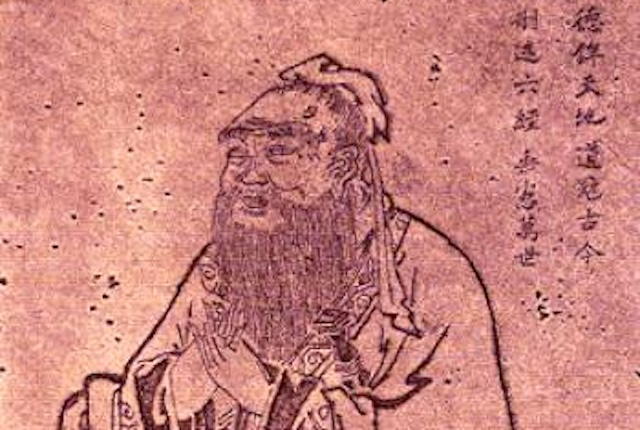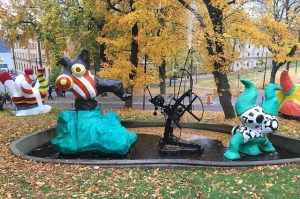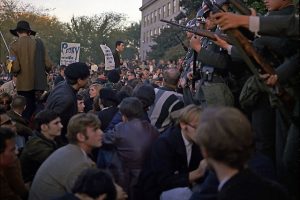10 Families Whose Legacy Still Shapes the World Today
Absolutely—that idea of legacy is both deeply human and wildly unpredictable. Some people plant seeds with a clear vision of how they want to be remembered. Others might just follow their passion or instincts, unaware they’re building something that could outlast them and shape lives they’ll never meet.
Sometimes it’s a family tradition passed down through generations, sometimes it’s an invention, a business, or even a philosophy. And then, almost accidentally, it becomes something greater—a cultural artifact, a symbol, or even a legend. What starts as one person’s story becomes our story, shared and remembered by people far beyond its origin.
It’s kind of poetic, really—how something personal can become universal.
Got a specific story or legacy you’re thinking about? Or just vibing on the idea?Let’s get something about it.
10. The World’s Oldest Hotel Has Been Run by the Same Family for Over 1,300 Years—That’s 52 Generations of History
In a world where companies come and go with the blink of an eye, there’s one place in Japan that has truly stood the test of time—and we mean literally. Tucked away in the peaceful mountains of Yamanashi Prefecture lies the Nishiyama Onsen Keiunkan, an ancient hot spring inn that first opened its doors way back in 705 AD. That’s not a typo. We’re talking over 1,300 years of continuous operation.
What makes this inn even more jaw-dropping isn’t just its age—it’s that it has been run by the same family for 52 generations. Imagine inheriting your job from someone who lived before Vikings even set foot in England. That’s the level of ancestral legacy we’re dealing with here.
Sure, the inn has modern conveniences like electricity, Wi-Fi, and actual plumbing now, but the soul of the place? It’s unchanged. Guests still come to soak in the same geothermal waters that ancient samurai once enjoyed, all while being treated like royalty by a staff that knows hospitality better than anyone. It’s a rare kind of cultural preservation, where tradition isn’t just respected—it’s lived.
There’s something strangely comforting about the idea that a single family has dedicated itself, generation after generation, to welcoming strangers into the same cozy wooden halls. In an age of fast everything, this kind of timeless commitment feels not only unusual but a little bit magical.
Looking for a living piece of history that actually lets you check in and sleep under its roof? The Nishiyama Onsen Keiunkan isn’t just a hotel—it’s a window into the past that somehow still thrives in the present. And that’s the kind of story that reminds us how fascinating real life can be.
9. This Iconic New Orleans Restaurant Has Been in the Same Family Since 1840—And They’re Still Serving Legendary Dishes
In the heart of New Orleans’ French Quarter, where the air smells like jazz and spice, there’s a restaurant that’s more than just a place to eat—it’s a living piece of American culinary history. That restaurant is Antoine’s, a family-owned institution that’s been running strong for five generations, ever since it first opened its doors in 1840.
Think about that for a moment. That’s over 180 years of meals, memories, and mouthwatering tradition—all within the same family. When most businesses struggle to make it past a single generation, Antoine’s has been passing down recipes, techniques, and passion like precious heirlooms.
It all began with Antoine Alciatore, a French chef who brought his flavor-packed vision to New Orleans and launched what would become the oldest family-run restaurant in the United States. Back then, Antoine’s doubled as a restaurant and hostel—modest beginnings for what would grow into a dining empire.
By the time his son took over a few decades later, Antoine’s was making culinary headlines with creations like Oysters Rockefeller and Baked Alaska, dishes that are still on the menu today and have reached near-legendary status. The restaurant didn’t just survive—it thrived, eventually growing large enough to seat 800 guests. That’s more than many wedding venues.
Through wars, storms, and changing times, ownership kept flowing through the same bloodline—from father to son, to nephew, and beyond. The continuity is rare. The dedication? Unshakable. And the food? Let’s just say you don’t stick around this long without knowing your way around a sauce.
Visiting Antoine’s isn’t just about eating—it’s about tasting a slice of history, served with Southern charm and a side of legacy. If you’re ever in New Orleans, skip the trends and step into a place where heritage lives on every plate.
8. The Largest Generational Photo: 6 Generations of Women

Family photos are a cherished tradition, but they can also be a logistical nightmare. Coordinating schedules, wrangling kids, and managing the quirks of family dynamics—especially when older relatives are involved—can make the whole process feel more like a circus than a celebration. Still, some families go above and beyond to create unforgettable memories, and one such family in Canada achieved what might just be the largest generational family photo ever in 2023.
This remarkable photo brought together six generations of women, spanning over a century of family history. At the center of it all was a newborn baby named Zhavia, who was lovingly held by her great-great-great grandmother. Talk about a family tree with deep roots!
The 98-year-old matriarch of the family, who held Zhavia in her arms, has lived an incredible life. She married at just 16 years old and went on to have 13 children with her husband. Interestingly, her husband already had 10 children from previous relationships, so the family quickly grew in size. Over the years, those children had children of their own, and those children had more children, creating a sprawling family network. By the time the photo was taken, little Zhavia was member number 621 of the family!
This photo isn’t just a snapshot of six generations—it’s a testament to resilience, love, and the strength of family bonds. It’s a reminder of how interconnected we are and how the actions of one generation ripple through the lives of those who come after. Imagine the stories this family could tell, from the challenges of the past to the hopes of the future, all captured in one unforgettable image.
Large family photos like this are rare, but they remind us of the beauty in tradition and the power of coming together to celebrate shared history. Whether you’re a fan of family reunions or prefer to keep things low-key, this story is sure to inspire a sense of wonder about the ties that bind us.
7. The Most Generations Alive at One Time: 7

When we talk about family trees, six generations alive at once is already a rare and remarkable achievement. But what if we told you there’s a family that pushed the limits even further? In 1989, the world witnessed a truly extraordinary event: seven generations of a single family alive at the same time. That’s right—seven living generations, a feat so rare it earned them a World Record.
Let’s break it down. If we assume a generation typically spans about 20 years, the math gets mind-boggling pretty quickly.
- Grandma would be around 40 years old.
- Great-grandma would be 60.
- Great-great-grandma would be 80.
- And great-great-great-grandma would be 100.
But the Bunge family took it a step further. In 1989, Augusta Bunge, a 109-year-old woman, was alive to witness the birth of her great-great-great-great-grandson. That’s seven generations spanning over a century, all alive and connected by blood at the same time. It’s like a living timeline of history, wrapped up in one extraordinary family.
Augusta Bunge’s story is a testament to the strength and resilience of family bonds. Imagine the stories she could tell—spanning wars, migrations, technological revolutions, and cultural shifts. Her lifetime would have overlapped with some of the most pivotal moments in modern history, and yet, she lived to see her legacy grow even deeper with the arrival of her great-great-great-great-grandson.
This record-breaking family reminds us of the incredible continuity of life. It’s not just about numbers; it’s about the connections that bind us across time. While seven generations alive at once is an anomaly, it’s a beautiful reminder of how family can transcend generations, leaving a legacy that lasts for centuries.
6. Confucius Has Over 2 Million Descendants—And His Family Tree Spans More Than 80 Generations

When people think of Confucius, they often picture wise old sayings or philosophy textbooks gathering dust. But behind the profound teachings and ancient scripts lies a living, breathing legacy that’s nothing short of astonishing—a family tree so vast, it’s been called the longest in recorded history.
Born over 2,500 years ago during China’s Spring and Autumn period, Confucius wasn’t just a philosopher—he was the founding father of a lineage that’s still growing today. His ideas on morality, social ethics, and human virtue have shaped cultures for centuries. Yet, what many don’t realize is that his genealogical legacy might be just as mind-blowing as his intellectual one.
Recognized by Guinness World Records, the Confucius family tree spans more than 80 generations and includes over two million documented descendants. And we’re not talking about a few family scrolls tucked away in an attic—this is a massive genealogical feat that took years of research, organization, and dedication.
In fact, there’s an entire organization—the Confucius Genealogy Compilation Committee—that exists solely to manage this sprawling family record. In 2009, they released the 5th official edition, and it’s a beast: 80 volumes, weighing nearly half a ton. By 2012, the entire collection had been digitized, bringing the count to 83 generations across 43,000 pages. That’s not just a family tree—it’s practically an encyclopedia.
Think about it: centuries of births, deaths, and family branches all traced back to a single man whose thoughts on self-discipline and harmony still echo in classrooms and homes across the globe. It’s an extraordinary fusion of philosophy and family, history and humanity.
5. The Secret Mud Behind Every MLB Baseball—And the Family That’s Been Rubbing It On for Three Generations

When you think of Major League Baseball, maybe you picture roaring crowds, dramatic home runs, or those cinematic pitcher-versus-batter stare-downs. But behind the scenes—far from the stadium lights—there’s a story that’s honestly stranger than fiction. And it all comes down to mud.
Yes, mud. Not just any mud, though—special mud. A one-of-a-kind, thick, gritty paste scooped up from a secret spot along the Delaware River. This isn’t a quirky tradition or a backup plan—it’s official MLB protocol. And one man has been at the heart of it for decades: Jim Bintliff, the third-generation “mudman” in his family.
Every single ball that hits the field in an MLB game—about 240,000 per season—gets personally hand-rubbed with this mysterious river mud. Fresh out of the box, baseballs are slick and shiny, almost impossible for pitchers to grip properly. But once that magic mud is applied, the surface gains just the right amount of traction. It’s not too rough. It doesn’t clog the seams. It’s… perfect.
And here’s the kicker: only Jim Bintliff knows the exact source of this mud. Not the MLB. Not the players. Not even the league’s top equipment staff. It’s a carefully guarded family secret, passed down from Jim’s grandfather, who first began supplying the mud decades ago. The location is so hush-hush, even GPS probably gets nervous near it.
Imagine that—a multi-billion-dollar sports league depending on a mystery substance pulled from a riverbank by one guy with a bucket. There’s no lab, no corporate supplier. Just Jim, the Delaware River, and a tradition that’s stuck around longer than most teams.
4. Kevin Bacon: The Unexpected Star of the World’s Biggest Family Tree

When we think of family trees, we often imagine a chart filled with names of close relatives—grandparents, parents, siblings, and cousins. But what if we told you that Kevin Bacon, the Hollywood actor, is part of the world’s biggest family tree? And no, we’re not saying he’s related to everyone (though that would make for a great movie plot). This family tree is so massive that it includes 13 million people and spans 11 generations, reaching back five centuries into history.
Here’s the twist: this isn’t technically Kevin Bacon’s personal family tree. Instead, it’s a family tree with Kevin Bacon on it. Researchers used public data to piece together this enormous database, connecting individuals through shared ancestors and relationships. The result? A sprawling web of humanity that places Kevin Bacon at its center—not as the patriarch, but as just one of the many branches.
This project wasn’t just about connecting names and dates. It also revealed fascinating insights into history and human life. For example, researchers were able to pinpoint how major world events, like the Civil War and the World Wars, caused significant drops in life expectancy. These events didn’t just shape nations—they shaped families, leaving gaps in the tree where lives were tragically cut short.
Another surprising discovery was the role of genetics in determining lifespan. While many of us like to blame (or thank) our parents for our traits, this study found that genetics only account for about 16% of a person’s potential lifespan. The rest is influenced by factors like lifestyle, environment, and access to healthcare.
Well, aside from being a Hollywood icon, he’s now a symbol of how interconnected we all are. This massive family tree shows that, no matter how distant or unrelated we may seem, we’re all part of the same human story. It’s a reminder that our lives are woven into a much larger tapestry, one that spans generations and continents.
This project is a testament to the power of data and the curiosity of researchers who sought to understand the complexities of human history. And while Kevin Bacon might not be the “grandfather” of 13 million people, he’s certainly become a household name in the world of family history.
3. Three Generations, One Legendary Bomber: The Family Legacy Aboard the B-52

Some families pass down recipes or old photo albums. Others pass down something a little more… high-powered. Like a strategic bomber with an 185-foot wingspan.
That’s exactly the case with the Welch family, whose story stretches across three generations and one of the most iconic military aircraft in history: the B-52 Stratofortress.
The B-52 isn’t your average plane. Designed back in the 1940s, it was originally meant for World War II, but didn’t take to the skies until 1952, earning it the nickname “BUFF” (Big Ugly Fat Fellow—ask an Airman what the F really stands for). Despite its age, this beast is still roaring through the clouds today, making it one of the longest-serving aircraft in the history of aviation. Over 70 years of flight, and counting.
And that incredible lifespan? It’s what allowed a grandfather, father, and son to all fly the same model of aircraft.
- Colonel Don Sprague flew the B-52 in the 1970s, back when Cold War tensions were high and disco was on the radio.
- His son, Lt. Colonel Don Welch, carried the torch into the next generation, flying out of Las Vegas during more modern missions.
- And in 2011, the legacy continued when Captain Daniel Welch joined the same squadron his grandfather had once commanded—talk about full circle.
It’s almost surreal to think about: three men from the same bloodline, spanning different eras of history, all connected by a single aircraft design. You don’t see that with most technology. No one’s sending emails on a 1950s computer or streaming Netflix through a rotary phone.
But the B-52? Still going strong. And with the Air Force planning to keep these aircraft in service until at least 2050, it’s not impossible that a fourth generation might eventually climb into that cockpit, continuing a legacy not just of family—but of engineering endurance.
2. The Beretta Gun Company: A Family Legacy for 15 Generations

When we talk about family businesses, we often think of cozy little shops or local traditions passed down through the years. But the Beretta gun company is proof that a family business can grow into something extraordinary. Founded in 1526, Beretta has been in the same family for an incredible 15 generations, making it one of the oldest continuously operating family businesses in the world.
It all started with Bartolomeo Beretta, a skilled gunsmith who sold 185 barrels of portable arquebus guns to the city of Venice. While the family believes Bartolomeo was already running the business for about 80 years by that point, this deal marked a major milestone. For his work, he was paid 296 Venetian ducats. If you break it down, each ducat contained 3.545 grams of gold, meaning Bartolomeo earned a total of 1,049.32 grams of gold—or about $64,000 in today’s money.
It seems like Bartolomeo did pretty well for himself, because he didn’t stop there. Over the centuries, the Beretta family continued to refine their craft, becoming masters of gunsmithing and expanding their business. Fast forward to today, and the company is a global leader in firearms manufacturing, reporting **annual sales of 826million∗∗.That’safarcryfromthe64,000 Bartolomeo earned in 1526, but it’s a testament to the enduring legacy of his hard work and vision.
What’s even more remarkable is how the company has adapted over the years. While it started with arquebus guns, Beretta has evolved to produce everything from hunting rifles to modern firearms used by military and law enforcement. Despite its global reach, Beretta remains a family-owned business, a rare feat in today’s corporate world.
The Beretta story is more than just about guns—it’s about craftsmanship, resilience, and the power of family legacy. It’s a reminder that with dedication and innovation, a small business started in a single workshop can grow into a worldwide institution.
1. The Blue-Skinned Family That Lived in Kentucky for 7 Generations
In the remote Appalachian mountains of eastern Kentucky, a family once lived that seemed almost mythical—the Blue Fugates. No, that’s not poetic license. They were literally blue. For seven generations, this real-life family carried a rare genetic condition that turned their skin shades of blue, earning them a place in both medical history and local legend.
The story starts in the 1800s with Martin Fugate, a French orphan who settled in Troublesome Creek. Unbeknownst to him, he carried a recessive gene that caused a condition called methemoglobinemia. It’s a mouthful, but the effects are striking—elevated levels of methemoglobin in the blood, a molecule that doesn’t carry oxygen well. The result? Skin that looked blue, lips that leaned purple, and even blood that was brownish, lacking proper oxygen.
Normally, this condition is vanishingly rare, and if it shows up at all, it’s typically in isolated cases. But in the case of the Fugates, the tight-knit and isolated community of the Appalachian region led to generations of intermarriage. The gene, which would otherwise be hidden by diversity, had nowhere to hide. And so, the “Blue People of Kentucky” were born—generation after generation.
While the condition can be dangerous in high concentrations, there’s a sweet spot between 10% and 20% methemoglobin where the blue hue appears but most health complications don’t. Many of the Fugates were otherwise perfectly healthy, living full lives well into their 70s and 80s. One descendant, Benjy Stacy, was born in the 1970s with visibly blue skin but eventually grew out of it as his methemoglobin levels balanced out.
As the Fugate family expanded and began marrying outside their small community, the recessive gene was diluted, and the striking blue trait faded from the lineage. Today, the blue-skinned family legacy is a reminder of how genetics, isolation, and history can intertwine in the most unexpected ways.

























